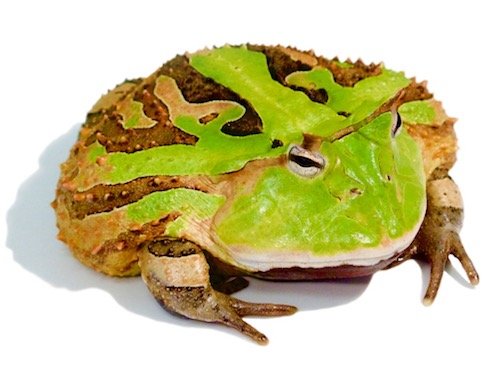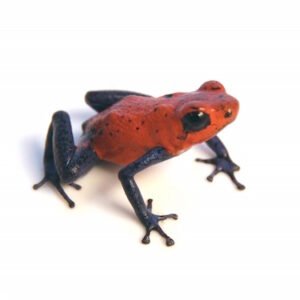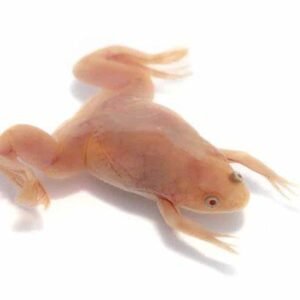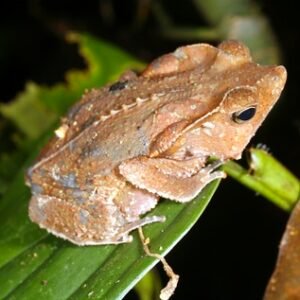Physical Characteristics and Behavior
The Surinam horned frog (Ceratophrys cornuta) is one of the most striking amphibians, recognized for its unique physical attributes. One of its most notable features is the pair of prominent horn-like protrusions above its eyes, which serve not only as a remarkable visual characteristic but also play a role in camouflage within its rainforest habitat. The coloration of this frog can vary from green to brown, often with darker spots or patches, further aiding in its ability to blend seamlessly into the leaf litter and foliage of its environment.
In terms of size, the Surinam horned frog is robust and stout, reaching lengths of up to six inches. This comparatively large size, combined with its seemingly intimidating appearance, contributes to its effectiveness as a predator in its ecosystem. The shape and dimensions of the frog allow it to sit motionless and wait for prey, embodying an ambush predator that relies heavily on natural camouflage.
Behaviorally, this amphibian exhibits intriguing traits, most notably its strategic use of camouflage. By remaining still and adopting a pose that mimics its surroundings, the Surinam horned frog can surprise unsuspecting prey such as insects and small vertebrates. Once a potential meal is in close proximity, it employs a rapid strike to capture it, showcasing its highly developed hunting skills.
The lifecycle of the Surinam horned frog is equally fascinating, as it undergoes significant transformation from tadpole to adult. After mating, females lay eggs in shallow water, where fertilization occurs. The tadpoles exhibit growth over several months, gradually developing into adults with distinct physical characteristics. Reproduction typically sites within the underwater settings of the tropical rainforest, ensuring that the young have an optimal environment for their early development.
Habitat and Conservation Status
The Surinam horned frog (Ceratophrys cornuta) is predominantly found in the dense rainforests of Suriname and the surrounding regions of South America. This amphibian thrives in moist, warm environments, typically inhabiting areas near ponds, swamps, and streams where it can find both food and water. These frogs exhibit a remarkable level of adaptability, often becoming accustomed to the unique conditions of their rainforest ecosystem. The primary ecological role of the Surinam horned frog involves being both a predator and prey within the food chain, helping to maintain the balance of their ecosystem.
However, the conservation status of the Surinam horned frog is increasingly concerning due to several threats. Habitat destruction, driven by logging, agriculture, and urban development, poses a significant risk to the natural environments in which these frogs reside. As their habitat diminishes, the chances of survival for this unique amphibian continue to dwindle. Climate change further exacerbates this issue, as shifts in weather patterns can alter the delicate microhabitats necessary for their development and reproduction.
Moreover, the illegal pet trade has emerged as another critical threat to the Surinam horned frog population. Their unusual appearance makes them appealing to exotic pet enthusiasts, leading to overexploitation in the wild. In response to these challenges, various conservation efforts are being implemented. Organizations focused on amphibian preservation are actively working to protect their habitats, restore affected areas, and raise awareness about the importance of biodiversity conservation.
Individuals can contribute to the conservation of the Surinam horned frog by supporting sustainable practices and advocating for the protection of their natural habitats. Educating others about the threats faced by this species and promoting responsible pet ownership are essential steps in safeguarding the future of the Surinam horned frog.





